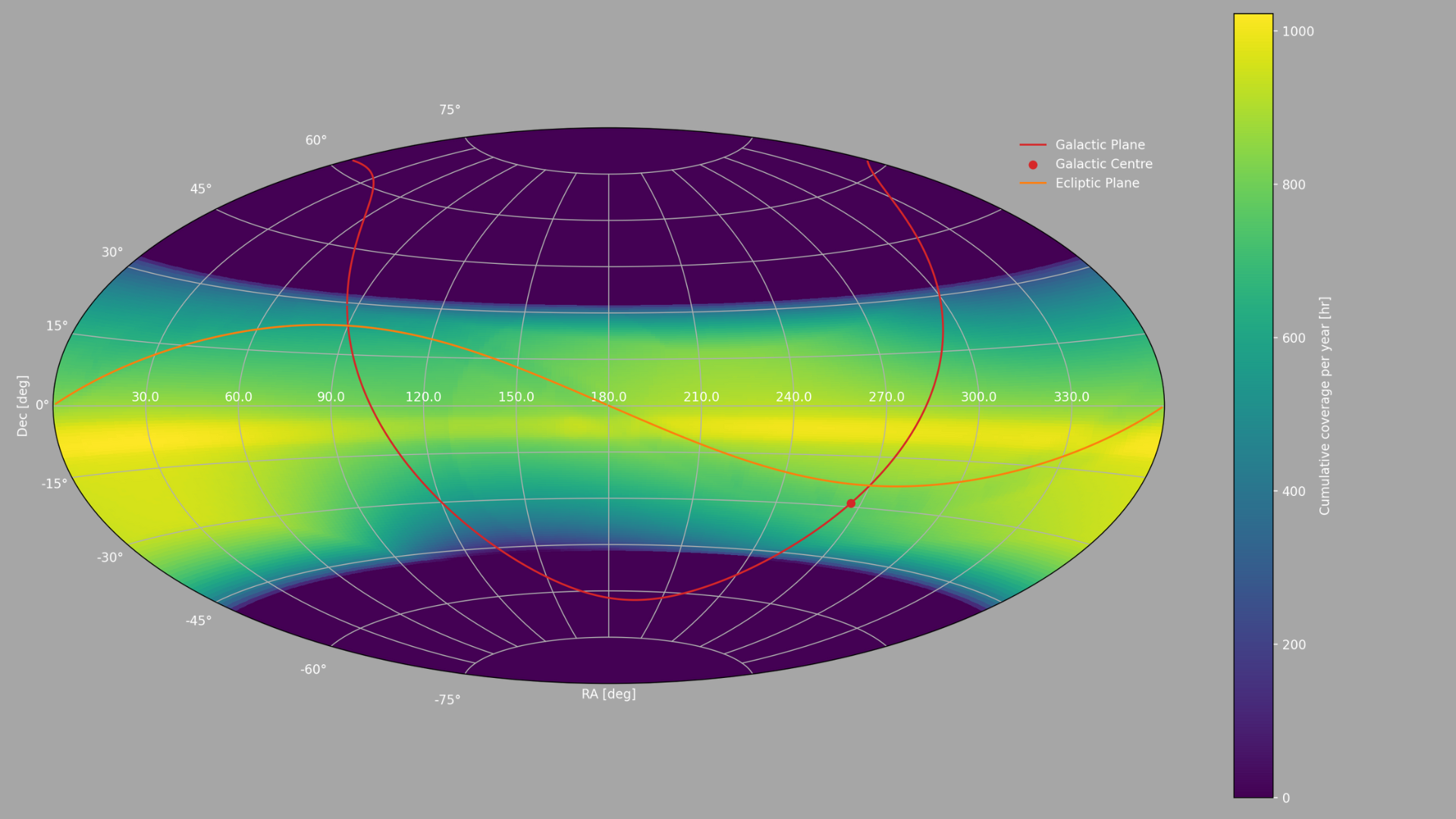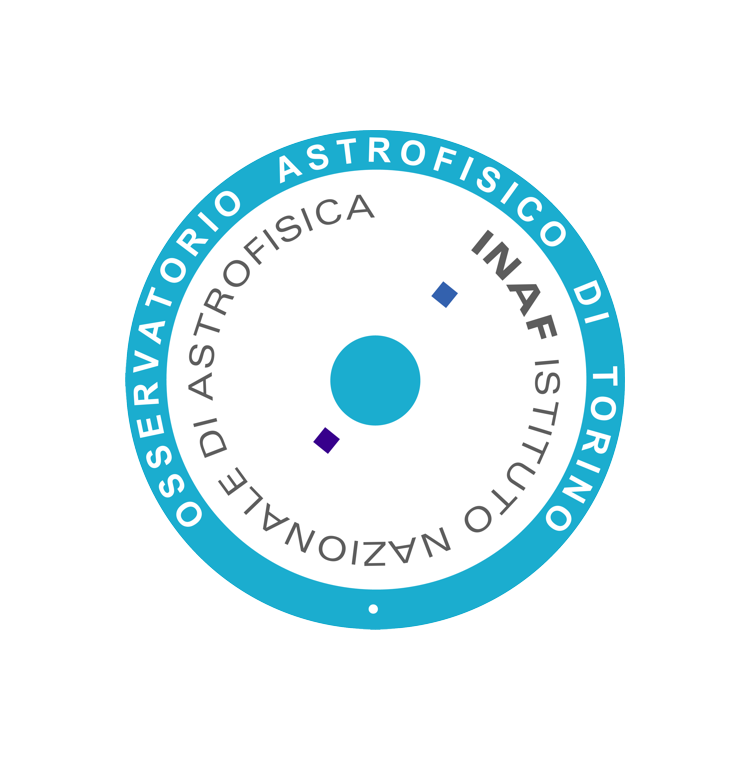
Cumulative coverage per year, across Mauve’s field of regard. The gradient from blue to yellow represents increasing cumulative coverage per year. The orange line represents the ecliptic plane while the red line shows the galactic plane, with the galactic centre shown as the red dot. Credits: Blue Skies Space
Fatemeh Zahra Majidi
Blue Skies Space Ltd
Thursday September 25, 2025, H 11.00 AM/h3>
Villa Magliolia seminar’s room- INAF-OATo
LIVE STREAMING
Abstract
Mauve is a satellite equipped with a 13-cm telescope and a UV-Visible spectrometer (with an operative wavelength range of 200-700 nm) conceived to measure the stellar magnetic activity and variability.
The science program will be delivered via a multi-year collaborative survey program, with thousands of hours each year available for long baseline observations of hundreds of stars, unlocking a significant time domain astronomy opportunity.
Mauve’s mission lifetime is 3 years with the ambition of 5 years, and will cover a broad field of regard (–46.4 to 31.8 degrees in ICRS) during this period.
Booked to launch on October 2025, Mauve’s science team will form prior to the launch date, defining the observation strategy and targets.
This facility was conceived to support pilot studies and new ideas in science and is fully dedicated to time-domain astronomy.
The main surveys to be executed by Mauve are long baseline observations of Flare Stars (eruptive Wolf–Rayet stars, UV Ceti stars, etc.), RS CVn variables, Eclipsing Binaries, Herbig Ae/Be stars, Exoplanet hosts, Hot Stars, etc. Besides these major science themes, the spectrometer’s data can be utilized to support and complement existing and upcoming facilities as a pathfinder, or conduct simultaneous/follow-up observations.
Link to the streaming: https://meet.
Local contact person: Matteo Pinamonti ( )
Referente locale: Aldo Bonomo

